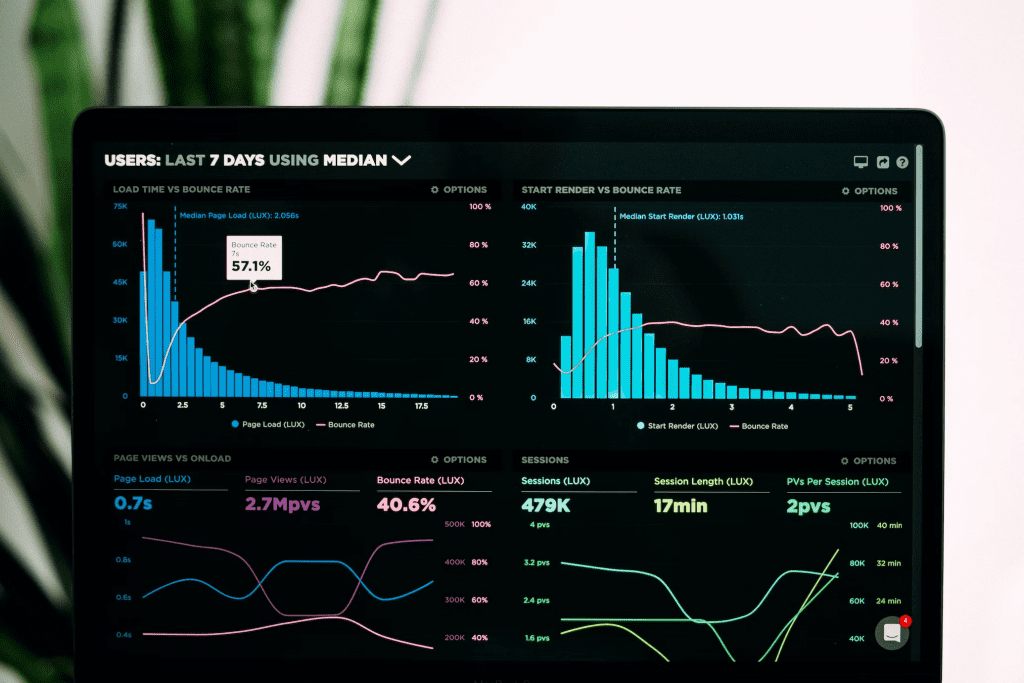
After months of meticulously planning and organizing your event, it finally concluded. However, pausing and assessing the event’s achievements is crucial before diving into your next endeavor.
A post-event analysis report is a comprehensive dossier, capturing the crucial elements of your event: its objectives, turnout, financials, and overall triumphs. This document is a testament to your event’s success for stakeholders and sponsors.
This comprehensive guide will lead you through crafting a detailed post-event report, equipping you with a template to kickstart the process.
The Significance of Post-Event Reporting for Successful
Events
Crafting a post-event report is vital in the event planning spectrum, especially when building a year-round cycle of community involvement and engagement-centered events on your portfolio. Here are essential reasons highlighting its significance:
Help assess the success of an event
A post-event report offers a chance to review and assess the event’s success. It furnishes a detailed summary encompassing the event’s objectives, turnout, and financial aspects. This comprehensive view aids in gauging the event’s success and pinpoints areas for potential improvements.
Help plan future events better
An after-event report is invaluable for crafting future events with more remarkable finesse and efficiency. This detailed scrutiny highlights what elements worked and which fell short of expectations.
Armed with such crucial insights, you can confidently implement significant enhancements and adaptations, ensuring the resounding success of all upcoming events.
Supports speaker, sponsor, and exhibitor ROI
This report is a powerful tool to communicate the event’s success to stakeholders like exhibitors, sponsors, and speakers.
It presents tangible data and valuable insights demonstrating the event’s impact, facilitating discussions about return on investment (ROI), and encouraging continued support and participation from sponsors and speakers in future events.

Improve marketing strategies
Thoroughly analyzing ticket sales and real-time event analytics, such as registration data, offers invaluable insights into the most impactful marketing channels.
This information within the post-event evaluation report enables the refinement of marketing strategies, ensuring precise targeting of the appropriate audience with the most effective messaging.
Grow customer relationships
Events go beyond mere transactions; they serve as foundations for cultivating relationships. Post-event reports provide insight into attendee preferences and behaviors, empowering you to customize marketing strategies for enhanced audience engagement and stronger connections.
Different Kinds of Post-Event Reports
Post-event reports come in different types, each dedicated to specific aspects of your event.
Attendance and registration reports
These reports compare registration figures against actual attendance, vital indicators of pre-event engagement, and the efficacy of marketing approaches and ticket pricing strategies. They also offer insights into attendance trends across different time frames.
Engagement reports
Examine attendee participation to unveil preferred topics and types of content, enabling more precise tailoring of post-event marketing campaigns. These reports provide valuable insights into what resonates most with your audience, facilitating more effective campaign strategies.
Reports on lead capture
Crucial for event hosts, sponsors, and exhibitors, furnishing valuable insights to enhance follow-up strategies for leads.
Social media analysis reports
These reports unveil the conversations and engagement surrounding your event across social media platforms, delivering invaluable insights into attendee sentiment and the event’s social media impact.
Meeting & chat recap reports
Vital for B2B events, these comprehensive reports summarize the number of meetings held, accepted, and declined, showing the value generated for participants.
In-depth marketing reports
These reports thoroughly examine your event’s marketing efforts, studying audiences, strategies, tactics, and performance metrics. They capture both positive and negative aspects, guiding decisions for future events.

Perfecting Post-Event Reporting: Revealing the Insights
The curtains have fallen, the final chat box has been closed, and your event has reached its successful conclusion. What’s the next step? It’s time to reveal the essential metrics and other processes involved in post-event reporting.
The vital metrics
Let’s dive into the numbers. In your post-event report, consider tracking essential event-based metrics like attendance, registrations, ticket sales, and sessions attended. But go beyond these basics. Tailor your metrics to your event’s unique characteristics and goals.
- Trade show metrics: Monitor product orders, booth visits, scheduled meetings, and captured leads to gauge the trade show’s success and impact.
- Career/Job fair metrics: Evaluate job views, applications, booth visits, and scheduled meetings to measure the effectiveness and outcomes of your career or job fair.
Conference metrics: Track attended sessions, hosted chats, viewed or downloaded documents, and clicked links to assess the performance and engagement of your conference.
Setting objectives and KPIs
The key to measuring an event’s success lies in aligning it with predefined objectives and relevant Key Performance Indicators (KPIs).
Whether enhancing brand awareness, generating leads, or achieving specific goals, having clear objectives beforehand allows these reports to precisely gauge the event’s success based on those established benchmarks.
Structuring the report
Storytelling is critical in structuring your post-event report. Begin with an executive summary that encapsulates the event’s highlights.
Delve deeper into the previously defined metrics, objectives, and KPIs, presenting a detailed account of what succeeded and what didn’t. This narrative approach provides a comprehensive understanding of the event’s outcomes and actionable insights for future improvements.
Leveraging AI can significantly expedite the process of deriving insights from event data. It’s all about efficiency, sparing you from tedious number-crunching tasks.
Initiating the report shortly after the event’s conclusion is ideal. This allows for capturing fresh details while vivid in your memory, usually within a week or two.
Extending the report completion timeline to within a month post-event is prudent for more extensive or intricate events requiring comprehensive data collection, like participant net promoter scores (NPS) or other detailed metrics.
This balance ensures a prompt report without compromising the inclusion of crucial, comprehensive information.
The goal remains twofold: promptness in report creation and adequate time for accurate data gathering and insightful analysis.

Things to Include in Your Post-Event Report
A thorough post-event report should encompass crucial components necessary for a comprehensive evaluation and analysis of the event. These elements offer valuable insights important for informed decision-making and future event enhancements.
Here’s an outline of essential components to incorporate into your post-event report:
Overview
The initial segment of your post-event report should provide a concise overview of the event, encompassing details such as its name, date, venue, and primary purpose. This foundational information sets the stage and context for the subsequent report sections.
Goals
It’s essential to delineate your event’s objectives and Key Performance Indicators (KPIs). These objectives include enhancing brand visibility, nurturing lead generation, or fundraising for a particular cause.
It must show quantitative and qualitative goals, including revenue generated and overall attendee satisfaction. These inclusions present a well-rounded and comprehensive assessment.
Demographics
Present a comprehensive event attendance summary detailing the total number of attendees alongside relevant demographic data. This may encompass information regarding age groups, gender distribution, job titles, and industry affiliations of the attendees.
Ensure that you incorporate both the projected attendee demographics and the actual demographic composition of the attendees. This comparison facilitates better planning for future events by refining messaging and marketing strategies to align more accurately with the audience demographics.
Include attendee statistics like numbers, demographics (age groups, professional backgrounds, etc.), and other relevant attendee data.
Achievements and recommendations
Detail what worked well and areas for improvement, offering actionable suggestions for future events.
Logistics
Cover the logistics of setting up and concluding the event, addressing any challenges or successful strategies.
Metrics
Compare the predetermined metrics with the actual achievements, providing insights into the event’s success against the set targets.
Promotional activities
Summarize promotional efforts across various channels, detailing costs, reach, and effectiveness with supporting visuals.
Registration and check-ins
Discuss insights and suggestions to enhance the registration and check-in processes based on experiences.
Visual highlights
Showcase the event’s exciting moments and key highlights through visuals, providing a snapshot of the experience.

Budget and expenses
In your post-event report, dedicate a section to the event budget and expenses, detailing the planned and actual allocations for the event. Ensure that any unexpected expenses are documented along with explanations for their occurrence. Additionally, include a comprehensive breakdown of sponsorships.
A detailed financial portrayal clarifies the event’s overall cost, aiding in identifying potential overspending areas. This comprehensive view allows for better economic assessment and future planning.
Event timeline
Incorporate an event timeline within your report, encompassing crucial milestones and any adaptations made during the event’s course. This chronological depiction offers context for evaluating the event’s success and accounts for encountered challenges.
Event activities
Detail the event’s content and activities, summarizing keynote speeches, workshops, networking sessions, brand activations, or entertainment. Highlight particularly successful or well-received components for emphasis.
Additionally, incorporate post-event content initiatives that have either been executed or are scheduled for the near future. These include event recap blog articles, email nurturing campaigns, post-event VIP gatherings, and similar initiatives to extend the event’s impact beyond its duration.
Feedback
Integrating feedback or comments from attendees is crucial. Incorporate insights from surveys, social media mentions, or direct communication channels.
This feedback is a barometer for gauging overall attendee satisfaction and provides valuable pointers for areas needing improvement in future events.
Main insights and learnings
Conclude your post-event report with a section on key takeaways and lessons learned. This segment should highlight successful elements, areas with potential for improvement, and recommendations for future events.
Be candid and straightforward in addressing areas that you could have enhanced. For instance, evaluate if the venue size was adequate, assess staffing at the onsite check-in counter, or consider addressing session availability issues leading to long queues.
This section serves as a roadmap for next year’s organizers, aiding in making informed and improved decisions. Suppose you hosted an event about student loan refinancing but couldn’t thoroughly answer the attendees’ questions. In that case, you could consider inviting more expert speakers next time or allotting more time for an open forum.
Incorporating these parts into the post-event report will create a comprehensive narrative that evaluates the event’s performance and provides valuable insights for future planning and improvements.

Crafting an Ideal Post-Event Report Summary in 6 Easy Steps
Since you understand the importance of a post-event report, you’ll prioritize its quality. Here’s a step-by-step guide to assist in crafting an excellent one.
Remember, your report has a time limit. Aim to publish and share it within the initial days following your event. Prioritize your event summary immediately after the event’s conclusion.
1. Establish a streamlined data tracking process during your event
While managing the event, take notes on the proceedings and gather “behind-the-scenes” photos for the report. Employing a virtual event platform capable of automatically collecting data in the background proves invaluable for comprehensive reporting.
2. Select the most pertinent data to present
Respect your readers’ time by offering a high-level view in your report, showcasing information crucial to stakeholders upfront. For comprehensive details, consider utilizing an appendix to include additional information without overwhelming the main report.
3. Write your report
It should start with the executive summary, a concise encapsulation of the event’s highlights, objectives, and outcomes, and serve as the report’s “TL; DR.”
This section offers a comprehensive snapshot of the event’s success by providing an overview of the event’s critical data, achievements against objectives, budget insights, and strategic recommendations.
After which, highlight the event’s most popular content. This section presents viewership and engagement data. Rankings for top live and on-demand sessions, speakers, and engagement rates are outlined, offering insights into audience preferences and session success.
The following section should be where you present attendee demographics, including geographical distribution, viewing times, registration breakdown by country, company, and industry, and an age and gender breakdown. This data offers critical insights into the event’s audience alignment with intended targets.
Beyond the event perimeter, media exposure is a vital indicator of brand reach. This next section includes data on media exposure, encompassing impressions, click-through rates (CTR), and engagement rates from paid campaigns and organic posts, providing a holistic view of brand visibility.
Assessing attendee engagement is another critical part of the report. This section offers a comprehensive overview, including engagement rates, reaction breakdowns (likes, applause, emojis), and session bookmarking metrics. These insights provide a glimpse into attendee involvement and session resonance.
The executive summary presents a holistic view of the event, highlighting achievements, content success, attendee demographics, media exposure, and participant engagement. Detailed data and comprehensive insights are available in subsequent sections and the appendix for a deeper understanding.

4. Enhance your report with visuals
Opt for visual aids like graphs, infographics, tables, charts, and photos to render data more accessible to readers. Lighten the report by allowing the visuals to convey information, enabling readers to conclude the presented data.
5. Proofread meticulously
A compelling event summary emphasizes visual elements. Utilize graphs and visuals to depict data, minimizing extensive text. Ensure a polished report by eliminating spelling or punctuation errors.
6. Disseminate the event summary to stakeholders
Express gratitude to stakeholders for their involvement in the virtual event by sharing the summary through personalized emails. Highlight key results relevant to each stakeholder and propose the next steps in the partnership, fostering future collaboration.
Set Your Success Parameters Now for Better Future
Events
A post-event debrief is crucial for event success. It helps you evaluate performance, learn from experiences, enhance participant satisfaction, optimize budgets, measure ROI, assess partnerships, prepare for future events, and inform stakeholders.
Ultimately, it’s about learning from past events, continually improving future ones, and ensuring quality and effectiveness.
Post-event analysis drives continuous improvement in event planning and management. It turns feedback into actionable steps, enhances understanding of audience needs, and bolsters the company’s reputation as a top-notch event organizer.
It fosters innovation, sustains competitiveness, and ensures every event surpasses expectations, fostering audience loyalty and contributing to overall business success.
If you’re still on the fence about crafting a post-event report, this post should sway you in the right direction.
FAQs on Post-Event Analysis
What are free-form responses?
The most common post-event survey question is open-ended, allowing participants to express their thoughts freely. This type of question provides a text box for respondents to share as much or as little feedback as they prefer.
For effective free-form feedback, ensure your questions are specific and concise. While these questions yield rich qualitative insights, remember not to overwhelm respondents with an extensive list of questions in one go.
Check these example questions out.
- What stood out as your personal favorite or highlight of the event?
- Any suggestions to enhance next year’s event?
- Which speaker or presentation did you find most informative?
- Do you have recommendations for speakers or presentations for future events?
- Was there an aspect of the event you didn’t enjoy?
- How can we enhance this conference or event for you next time?
- Is there any other feedback or insights you’d like to share?
Which is better: rating-based or score-based questions?
Scaled response questions effectively gather quick, measurable, and qualitative feedback. These questions typically require respondents to rate their responses on a scale, often known as a “Likert scale.”
They swiftly capture immediate reactions to well-crafted inquiries and provide averaged insights into overall attitudes regarding specific aspects of the event. Here are a few examples:
- How likely are you to suggest or recommend this event to a friend or coworker, from very unlikely to very likely?
- Rate each speaker or presentation from poor to excellent.
- Rate the venue and food options from unsatisfactory to exceptional.
Why is a post-event feedback survey an essential research-gathering tool?
A post-event feedback survey is a valuable instrument for gauging the success and impact of events, irrespective of their scale.
Constructed using an interactive form creator and disseminated to a focused audience, it enables your company or organization to collect insights crucial for improving future events and conferences. This feedback loop aids in attracting more attendees and boosting revenue streams.

GoAllEvents is a leading event tech company, easing event ticketing, event marketing & event listing challenges for event organizers worldwide with cutting-edge tech solutions. With 12+ years of insights into event industries, we share in-depth guides, listicles & step-by-step solutions event organizers face daily.
